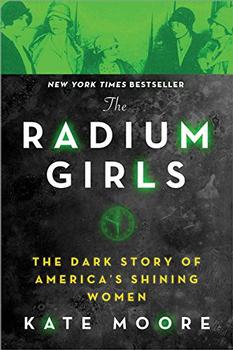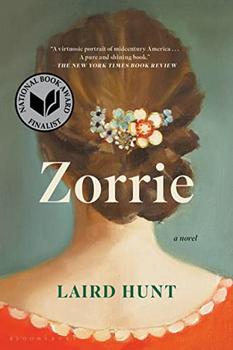Summary | Excerpt | Reading Guide | Discuss | Reviews | Beyond the book | Read-Alikes | Genres & Themes | Author Bio

The Dark Story of America's Shining Women
by Kate MooreIn 1915, Austrian-born Sabin von Sochocky developed a luminescent paint that used radium to create a glow-in-the-dark effect. Realizing the material could be used for many purposes, he opened the U.S. Radium Corporation in Orange, New Jersey, to produce the substance, and as a side business, contracted with manufacturers to create watch faces that could be read in the dark.
He hired girls – some as young as 14 – to work in the shop as dial painters. Using fine brushes, the girls delicately traced the timepiece's hands and numerals with the glowing substance. The instruments weren't quite sharp enough to achieve the precision required, so they employed a technique called "lip pointing," whereby the brush was put in the mouth before being dipped in the radium: "lip-dip-paint"...and repeat. Over time, ingesting the radioactive substance caused radium poisoning, and many of the girls in Orange — as well as those at a competing business, the Radium Dial Company in Ottawa, Illinois — died horrible deaths. The companies involved knew about the dangers of radium, but denied culpability, in some cases outright lying about the harm they caused.
While the lawsuits brought against these two corporations have been widely documented, the stories of the individual women have never been central to the narrative. "I was struck," Moore writes, "by the fact that the books focused on the legal and scientific aspects of the women's story, and not on the compelling lives of the girls themselves." In collectively becoming known as "the Radium Girls," their individual struggles and experiences were lost. The primary goal here is to give them names, faces, personalities – in other words, to humanize the "radium girls" and give them back the voices they lost nearly a century ago. In this aim, Moore succeeds admirably; although the lives of perhaps thirty women are highlighted, each comes across with her own particular strengths, weaknesses, concerns and family life. I came to know them so well that I was truly saddened by their physical declines and deaths, even though I knew the outcome in each case was inevitable.
Beyond the focus on the individuals impacted by blatant corporate negligence, the author creates tension as the girls become ill. No one in Orange or in Ottawa had seen radium poisoning before, and doctors and dentists were puzzled by what could cause teeth to fall out with the sockets failing to heal, jaws to disintegrate, and joints to freeze in place. Indeed, as the girls died, their death certificates inaccurately listed causes such as syphilis and diphtheria. Although readers know that radium was the culprit, Moore still keeps the suspense high; I felt like I was reading a "whodunnit" in which I knew who the murderer was but had to wait for the lead detective to figure it out.
An enthralling drama unfolds as the incredibly ill women testify in court and impassioned lawyers battle it out before judges and the press, who often came to the aid of plaintiffs who were literally disintegrating over the weeks needed to try their cases. The bad guys abound in this horrific tale, from the scientist who knew the lip-pointing practice was dangerous, to the "doctor" who told radioactive women they were "completely healthy," to the corporate vice president who deliberately suppressed medical reports, to the men who fired women as soon as they became obviously ill – as well as many others who put profits above lives.
The Radium Girls will likely be an emotional experience for many; the agony the women endured as their bones deteriorated as well as their courage in continuing to fight even while on death's doorstep make for heartbreaking reading. As Moore's heroines seek justice in the face of overwhelming odds, readers come to know them and root for their triumphs and grieve their losses. This exceptionally compelling book should appeal to a wide audience, including those who typically don't read non-fiction. I can't recommend The Radium Girls highly enough.
![]() This review was originally published in The BookBrowse Review in June 2017, and has been updated for the
March 2018 edition.
Click here to go to this issue.
This review was originally published in The BookBrowse Review in June 2017, and has been updated for the
March 2018 edition.
Click here to go to this issue.

If you liked The Radium Girls, try these:

by Melissa L. Sevigny
Published 2024
The riveting tale of two pioneering botanists and their historic boat trip down the Colorado River and through the Grand Canyon.

by Laird Hunt
Published 2022
"It was Indiana, it was the dirt she had bloomed up out of, it was who she was, what she felt, how she thought, what she knew."
Your guide toexceptional books
BookBrowse seeks out and recommends the best in contemporary fiction and nonfiction—books that not only engage and entertain but also deepen our understanding of ourselves and the world around us.